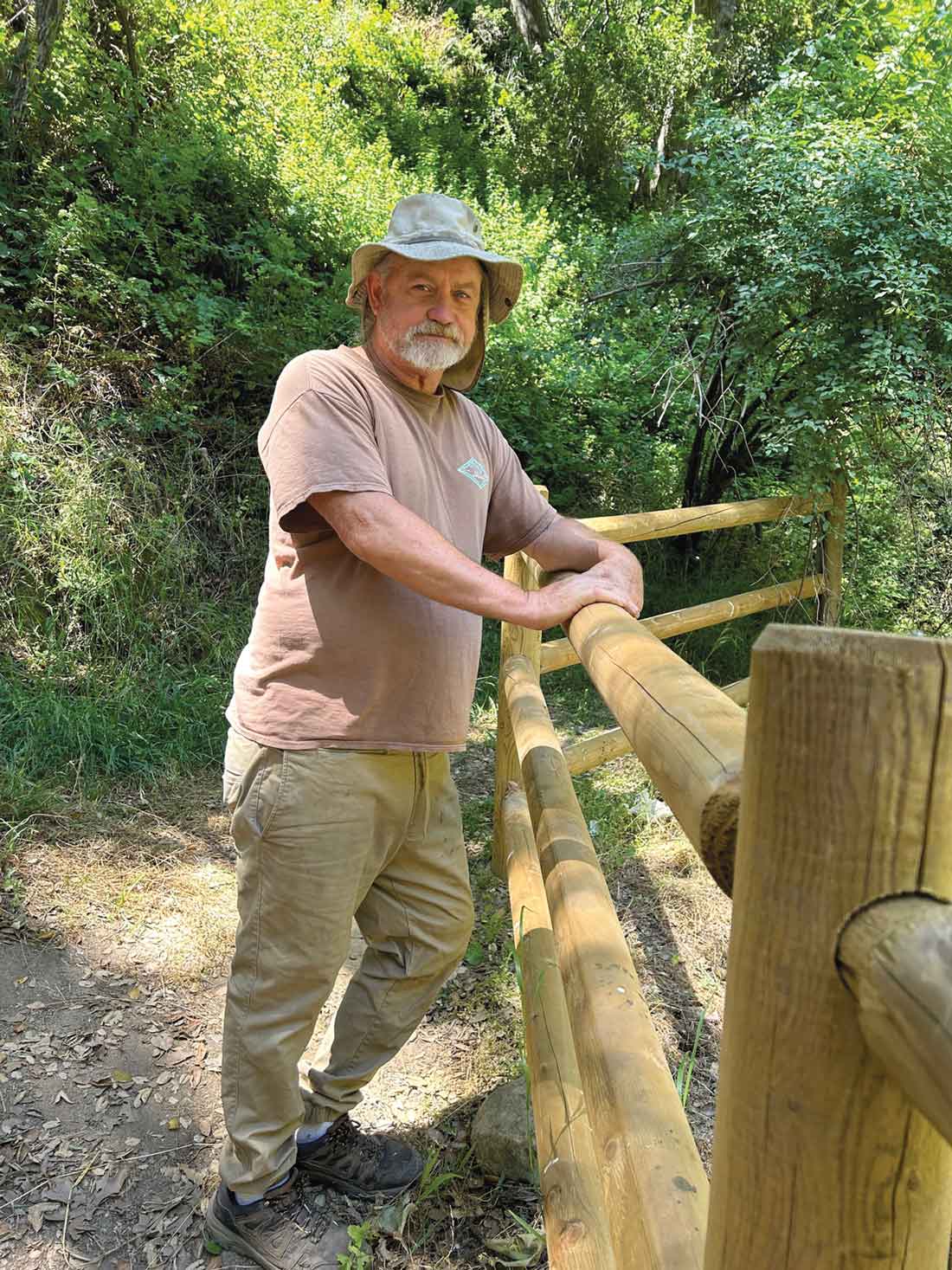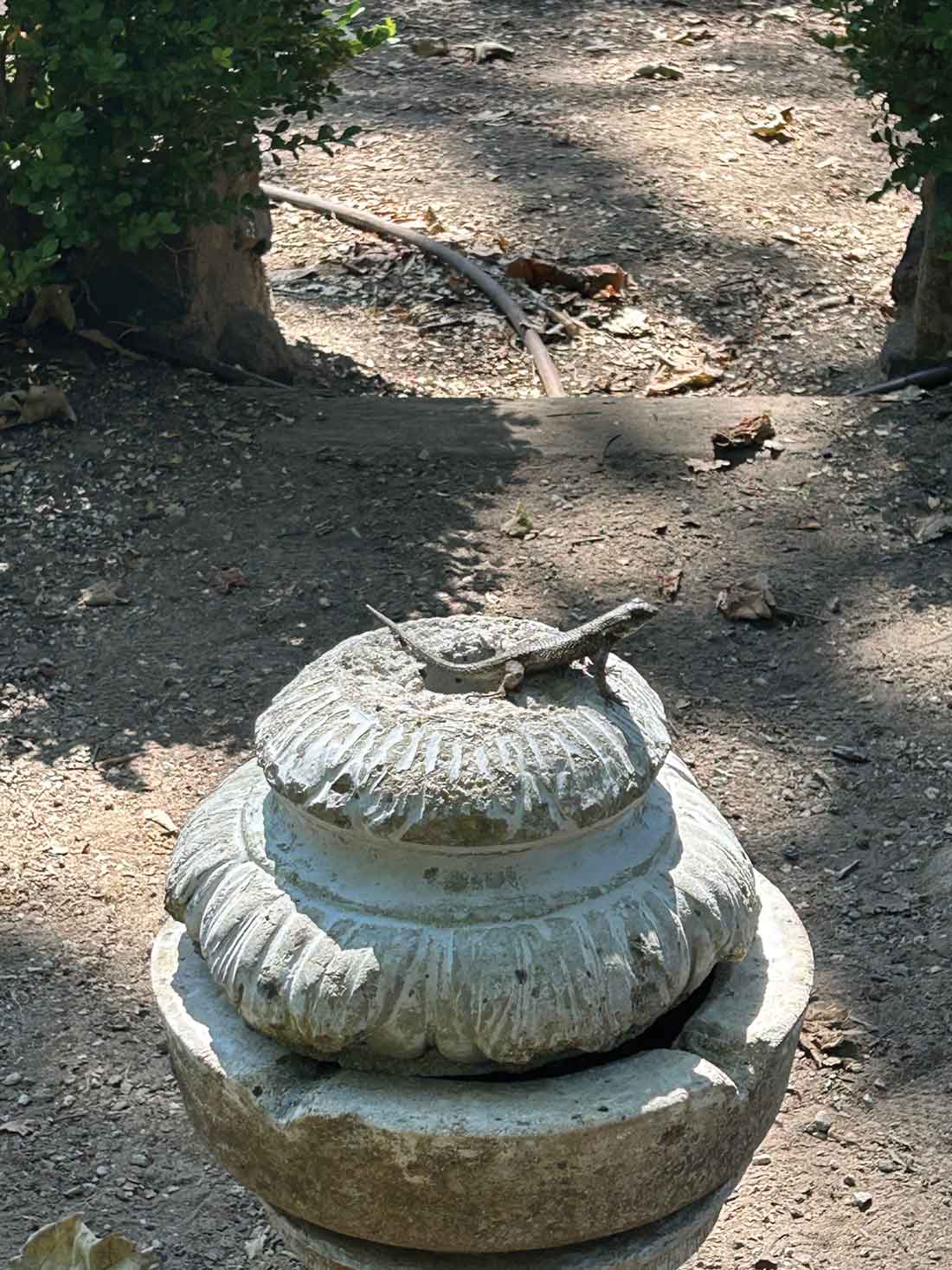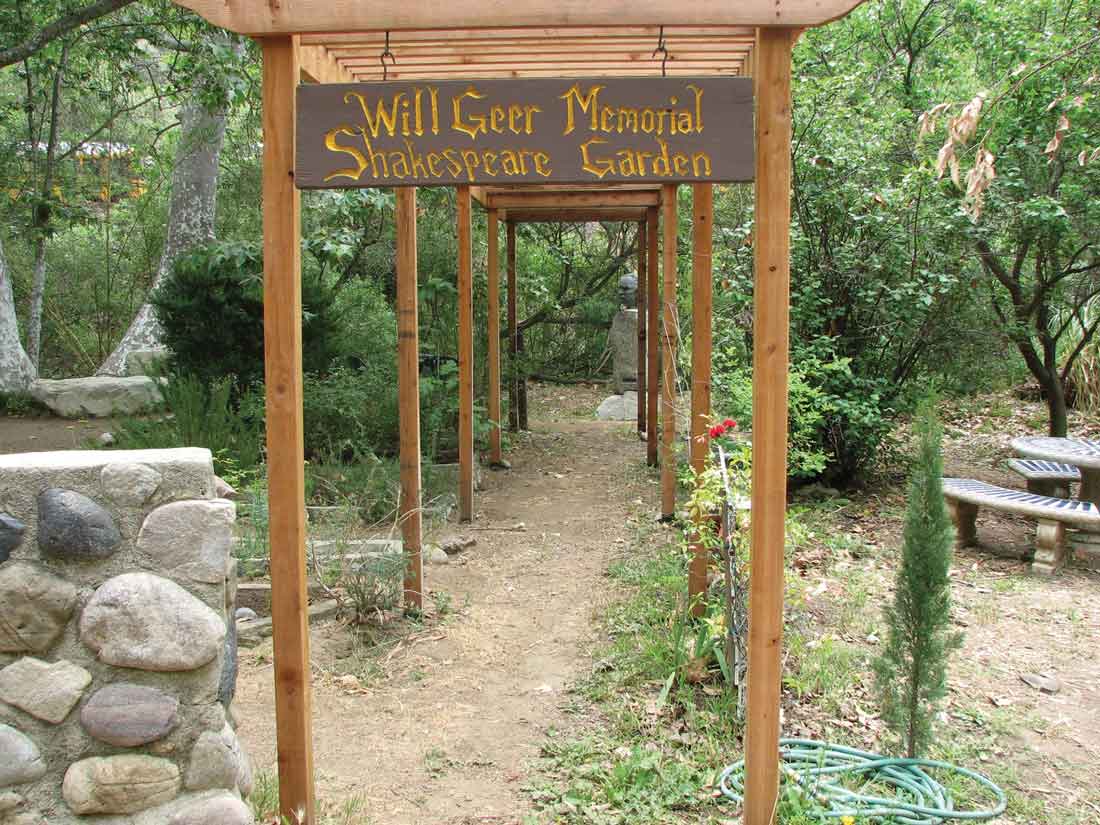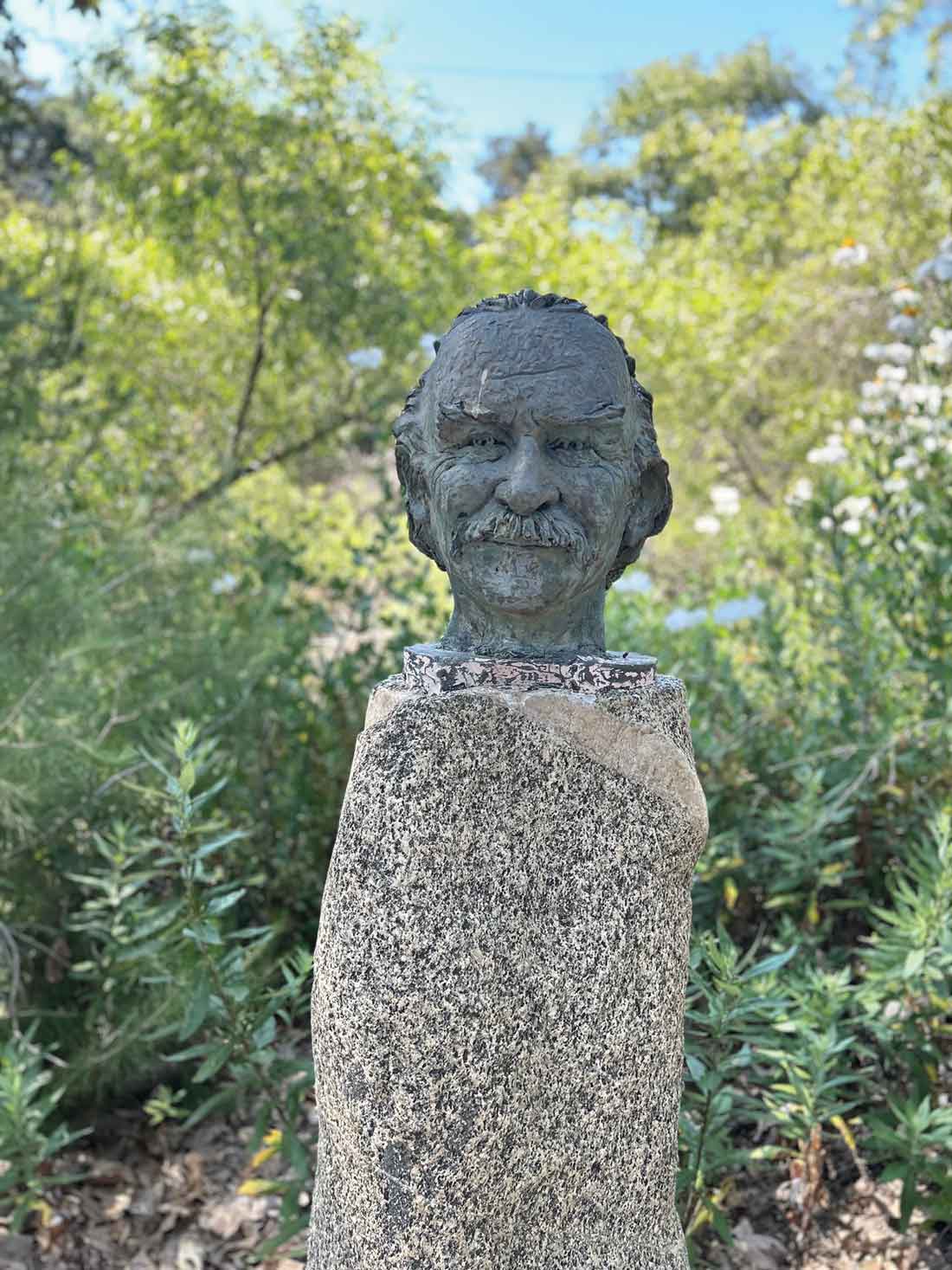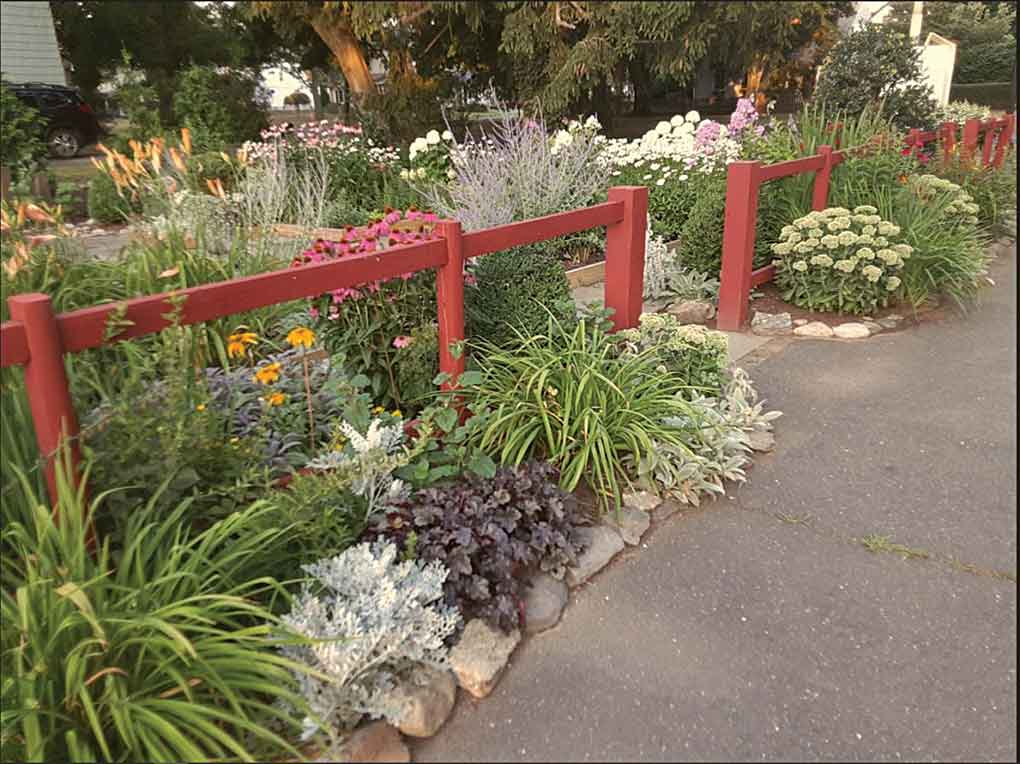The Will Geer Memorial
Theatricum Botanicumâs gardens around the theater this year are exceptionally lush and beautiful following the winter rains. But we were there to see the Will Geer Memorial Shakespeare Garden, where Will Geerâs ashes rest beneath a towering redwood.
Like all gardens, it is a work in progress according to Tom Hayduk, who in 2019 signed on with Theatricumâs Restoration Committee to restore the garden. Anticipating our tour, we found him deadheading a rose bush whose blooms were beyond their prime. We began the tour in a place he calls the creek-side picnic area that leads into the garden under a canopy of majestic Sycamore and redwood trees. We perched on a couple of picnic tables as he introduced himself.
Above: Tom Hayduk
Right: Garden Entryway





